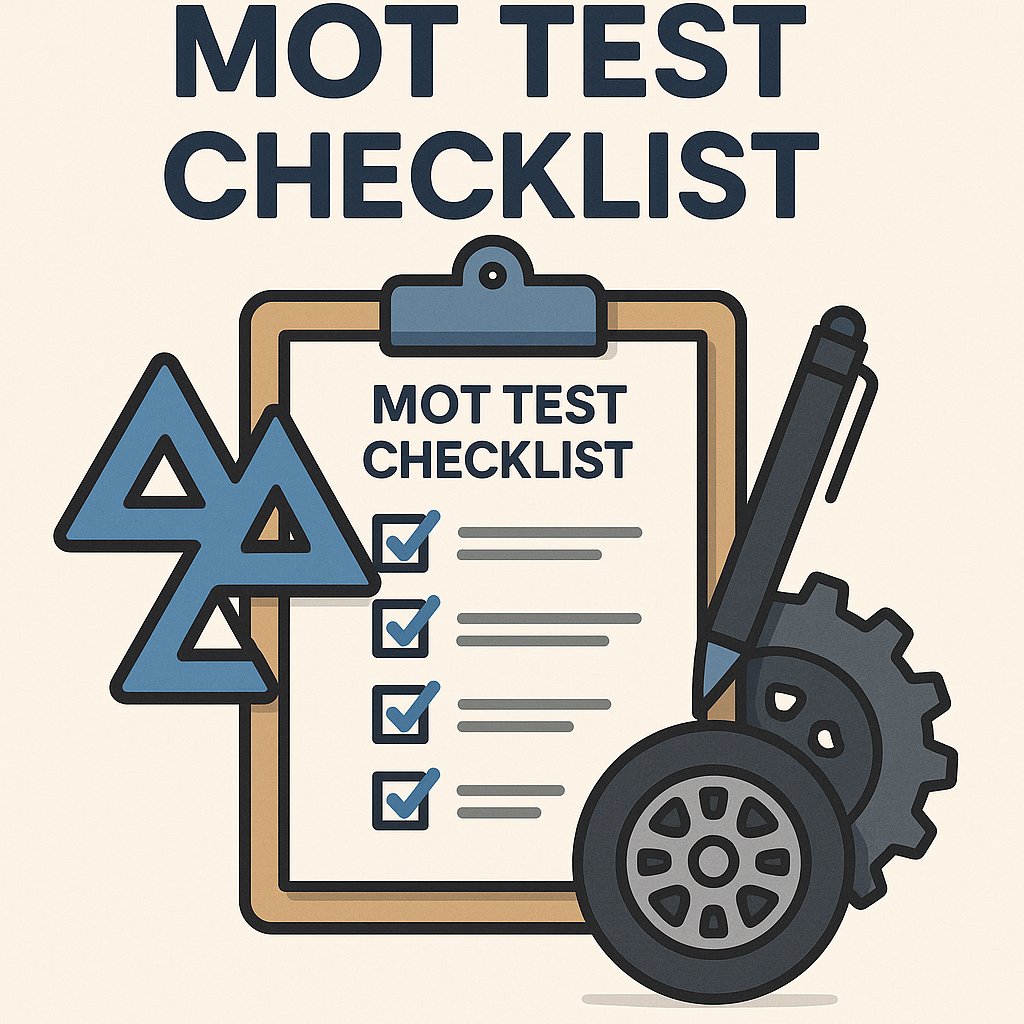
How to Avoid MOT Failure and Dangerous Defects
If your car is due for its MOT test, preparation is key to avoiding costly surprises. This complete MOT test checklist explains what’s checked, the types of MOT failures you can receive, and what you can do to keep your vehicle road-legal and safe.
What Is Checked in an MOT Test?
An MOT (Ministry of Transport) test is an annual inspection that ensures your vehicle meets road safety and environmental standards. Here’s what’s included in the test:
- Body and Vehicle Structure: Free from corrosion, damage, or sharp edges
- Towbars: Securely fitted; includes engine mountings and electrical sockets
- Fuel System: No leaks or degradation; fuel cap must seal correctly
- Exhaust Emissions: Must meet legal pollution limits
- Exhaust System: No leaks; catalytic converter must be present if required
- Seatbelts: Secure and fully operational
- Seats: Properly secured; driver’s seat must be adjustable
- Doors: Must latch securely and open from the inside and outside
- Mirrors: Legal number and working condition
- Load Security: Boot or tailgate must close securely
- Brakes: Pads, performance, ABS and ESC systems checked
- Tyres and Wheels: Minimum tread depth of 1.6mm; no damage
- Registration Plates: Must be legible, securely attached, and properly spaced
- Lights: Headlights, indicators, and brake lights must work and be properly aligned
- Bonnet: Must latch and stay closed
- Wipers and Washers: Must work effectively
- Windscreen: No significant damage in the driver’s field of vision
- Horn: Fully functional and suitable for the road
- Steering and Suspension: No leaks, damage, or worn components
- VIN (Vehicle Identification Number): Must be clearly displayed and match records
- Electrical System: Battery and wiring checked for faults
Common Causes of MOT Failure
Common reasons for MOT failure include:
- Worn tyres or low tread
- Non-functioning lights or bulbs
- Damaged or ineffective wiper blades
- Excessive exhaust emissions
- Faulty brakes or suspension
If you’re worried your car might fail, consider delaying the test (if your MOT certificate is still valid) or getting a pre-MOT inspection. Many garages offer free MOT retests within 10 days.
MOT Dangerous Defects: What You Need to Know
Some faults are classified as dangerous defects, which make your vehicle illegal to drive—even to another garage.
Examples of Dangerous MOT Defects:
- Brake failure or worn pads
- Bald or damaged tyres
- Non-working seatbelts
- Cracked windscreen in driver’s line of vision
- Leaking or loud exhaust systems
- Dashboard warning lights that stay on
Even a dashboard light can cause a dangerous MOT fail if it prevents the driver from being alerted to critical problems.
Should You Fix Dangerous MOT Defects?
If you plan to keep using the vehicle, fixing dangerous defects is necessary. However, for older vehicles, the cost of repairs may exceed the car’s value. In that case, it may be more practical to sell your car for scrap or salvage.
How to Pass Your MOT Test: 5 Simple Checks
To avoid common MOT fails, check the following before your appointment:
- Check All Lights: Headlights, indicators, brake lights, and number plate lights
- Inspect Tyres: Tread depth, sidewall damage, and overall condition
- Fill Washer Fluid: An empty reservoir = automatic fail
- Dashboard Warning Lights: Ensure none stay on unnecessarily
- Remove Obstructions: Decorations or dash cams that block the view can lead to a fail
Tip: Perform a full pre-MOT check or book a quick inspection with your garage.
MOT Failure Categories Explained
Since 2018, MOT faults fall into four categories:
| Category | Outcome |
|---|---|
| Advisory | Pass – May need attention soon |
| Minor | Pass – Present issue, but not serious |
| Major | Fail – Must be repaired before retesting |
| Dangerous | Fail – Car is unsafe and cannot be driven |
Final Thoughts: Stay Safe and Road-Legal
Understanding this MOT test checklist helps you avoid unexpected failures and stay safe on the road. Whether you’re trying to pass on the first attempt or deciding whether repairs are worth it, preparation makes a difference.
If your car is no longer worth fixing, get a free scrap or salvage quote from us today.
📥 Download our FREE printable MOT checklist:
Click here to download the PDF
